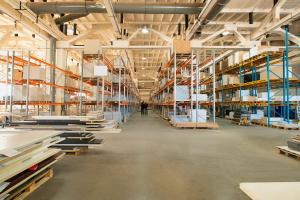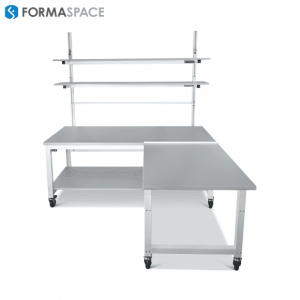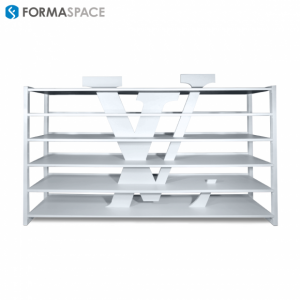Product Lead Times and Raw Material Costs Are Coming Back Down to Earth
Take a look at multiple industry sectors to understand the current state of supply chain logistics in this Formaspace research article.
High Inflation, High Dollar, But A Lower US Trade Deficit
· Mixed Signals – Energy Costs Are Driving Prices Up While A High US Dollar Is Driving Import Prices Down
Everyone, including the Federal Reserve, is trying to figure out today’s economy.
The war in Ukraine is clouding the economic forecaster’s crystal ball. Fighting is not only taking place on the battlefield but also in the world’s energy markets, with sanctions and counter-sanctions driving up the price of energy (especially in Europe).
Earlier in the summer, $5 gas and 9% inflation led the Fed to raise interest rates. So far, employment remains high, but 5% mortgage rates quickly cooled the red-hot housing market, decreasing demand for home goods.
Recently, US oil dropped to under $90/bbl, and gas fell to $3.75. However, Europe is seeing record natural gas prices, and the risk of a European recession is seen in the exchange rates. In a first, the dollar reached parity with the Euro, and the UK Pound is at a 35-year low.
The high dollar helped reduce our trade deficit by 12.6% in July, and it’s helping to blunt the inflation rate, which could hopefully help us stave off a recession here at home.
China’s Manufacturing And Economic Outlook
· After Covid Lockdowns, China’s Export Economy Is Slowing With Unpredictable Factory Shutdowns
Unlike the West, China has a zero-tolerance policy against Covid. For manufacturing companies, a Covid outbreak can lead to immediate lockdowns, as Tesla experienced recently at its Shanghai factory. Factory production across China has also been interrupted by power shortages caused by extreme heat, droughts, and floods.
The economy is also slowing due to rising inflation and fears over a property market bubble. While exports are still rising (7.1% year on year), that figure is down from July’s 18% year-over-year gains. Significantly, Chinese consumers are cutting back on e-commerce purchases after years of rocketing growth. The Yuan currency fell to a two-year low against the US dollar, causing China’s central bank to prop it.
The bottom line for purchasing agents and supply chain professionals? The pipeline for Chinese-sourced products and materials is recovering from the worst of Covid pandemic shortages but could still be hit with unexpected delays, depending on the sector.
Changing Consumer Demand Post-Covid
· Inflation Is Dragging Down Consumer Spending As Post-Covid Demand Shifts Away From Home-Oriented Products, Helping To Ease Lead Times.
Demand for products and services that boomed during Covid reverting to the pre-pandemic norms. Retail giant Best Buy sees supply chains stabilizing, with product lead times for electronics and home appliances easing.
However, all is not rosy for retailers. A slowing housing market and rising inflation have led to a downturn in consumer spending for “nesting” purchases (such as home furnishings and casual apparel) that has caught retailers such as Target off guard.
Warehousing/Distribution Center Logistics Remain Tight
· Warehousing And Logistics Bottlenecks Are On The Rise As Retailers Absorb Large Inventories
Spooked by earlier shortages, many retail companies ordered back-to-school and holiday goods early this year, taking advantage of pre-peak season cargo rates that were down as much as 60%.
The question is, what to do with all that inventory?
Some retailers, like Target, realized their purchases were no longer in sync with post-Covid consumer tastes and took a hit on profits by liquidating excess inventory.
Others are scrambling to find enough warehouse space to store everything, even resorting to stowing excess inventory in truck trailers and containers.
Meanwhile, logistics giants, such as Amazon, are trying to decide whether to proceed with their aggressive warehousing expansion plans or just wait it out.
Overseas Shipping Congestion Shifts Eastward
· Backups Now Threaten Eastern And Gulf Coast Ports; Railroads Take A Deep Breath To Reorganize Operations
Many shippers were trying to get their containers through LA ports during the first half of the year before a threatened strike action by port workers. This helped create monumental backups.
With a West Coast strike expected, shippers are sending large container ships through the widened Panama Canal, creating new backups in Houston and Savannah.
Read more...
Julia Solodovnikova
Formaspace
+1 800-251-1505
email us here
Visit us on social media:
Facebook
Twitter
LinkedIn
Legal Disclaimer:
EIN Presswire provides this news content "as is" without warranty of any kind. We do not accept any responsibility or liability for the accuracy, content, images, videos, licenses, completeness, legality, or reliability of the information contained in this article. If you have any complaints or copyright issues related to this article, kindly contact the author above.



